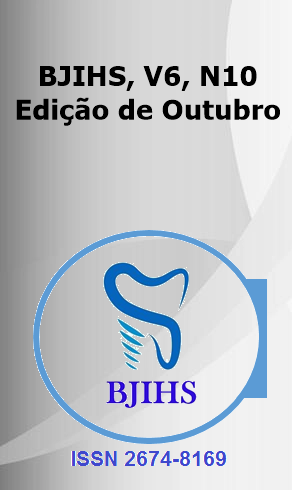Abstract
Introduction: Urolithiasis is a common condition that affects the urinary tract of dogs and cats, leading to the formation of stones that can result in cystitis or serious obstructions. These stones vary in composition, with struvite and calcium oxalate being the most common. The condition mainly affects specific breeds and age groups, requiring careful management due to high recurrence rates and variability in response to treatment. Objective: The aim of this study is to review diagnostic methods and surgical and non-surgical treatment options for urolithiasis in dogs and cats. Methodology: A narrative literature review was carried out, searching the PubMed, Scielo, Google Scholar and ScienceDirect databases. Articles were selected based on their relevance, covering publications on the prevalence, diagnosis and treatment of urolithiasis in small animals. Results and Discussion: Urolithiasis in dogs and cats has various causes, such as diet, genetic predisposition and anatomical factors. Diagnosis is made using laboratory tests, radiography and ultrasound, with tomography being a recommended tool in complex cases. Surgical treatment, such as cystotomy and urethrotomy, is indicated in situations of obstruction or large stones. Non-surgical treatment, including drug dissolution and dietary changes, can be effective for struvite and urate stones. Lithotripsy, which uses shock waves to fragment stones, is a less invasive alternative, but its high cost and limited availability restrict its use. The high recurrence rates reinforce the importance of preventive management and regular follow-up. Conclusion: Urolithiasis in dogs and cats is a challenging condition that requires accurate diagnosis and personalized treatment. Although surgical treatment is often necessary in severe cases, less invasive methods such as dietary changes and drug dissolution are effective in certain cases. Ongoing veterinary follow-up is essential to prevent recurrences and ensure the health of affected animals.
References
COWAN, L. A. Vesicopatias. In: BIRCHARD, S. J.; SHERDING, R. G. Manual Saunders: Clínica de pequenos animais. São Paulo: Roca, 2000. p. 931-942.
FORRESTER, S. D.; LEES, G. E. Nefropatias e ureteropatias. In: BIRCHARD, S. J.; SHERDING, R. G. Manual Saunders: Clínica de pequenos animais. São Paulo: Roca, 2000. p. 901-925.
GRUN, R. L. et al. Imagem radiográfica, ultrasonográfica e por tomografia computadorizada de cálculos vesicais de estruvita em um cão (relato de caso). Veterinária em Foco, v. 4, n. 1, p. 65-72, 2006.
HAWTHORNE, A. J.; MARKWELL, P. J. Dietary sodium promotes increased water intake and urine volume in cats. The Journal of Nutrition, Springfield, v. 134, s. 8, p. 2128S-9S, 2004.
LULICH, J. P. et al. Distúrbios do trato urinário inferior dos caninos. In: ETTINGER, S. J.; FELDMAN, E. C. Tratado de medicina interna veterinária: doenças do cão e do gato. 5. ed. v. 2. Rio de Janeiro: Guanabara Koogan, 2004. p. 1841-1877.
LULICH, J. P.; KRUGER, J. M.; MACLEAY, J. M.; MERRILLS, J. M.; PAETAUROBINSON, I.; ALBASAN, H.; OSBORNE, C. A. Efficacy of two commercially available, low-magnesium, urine-acidifying dry foods for the dissolution of struvite uroliths in cats. Journal of the American Veterinary Association, Ithaca, v. 243, n. 8, p. 1147-1153, 2013. Disponível em: https://doi.org/10.2460/javma.243.8.1147.
NELSON, R. W.; COUTO, C. G. Urolitíase canina. In: NELSON, R. W.; COUTO, C. G. Medicina interna de pequenos animais. 3. ed. Rio de Janeiro: Elsevier, 2006. p. 607-616.
OLSEN, D. Neoplasias e cálculos renais. In: HARARI, J. Segredos em cirurgia de pequenos animais. Porto Alegre: Artmed, 2004. p. 222-225.
RADITIC, D. M. Complementary and integrative therapies for lower urinary tract diseases. The Veterinary Clinics of North America. Small
Animal practice, Philadelphia, v. 45, n. 4, p. 857-878, 2015. Disponível em: ENCICLOPÉDIA BIOSFERA, Centro Científico Conhecer - Goiânia, v. 13, n. 23, p. 2016. doi:10.1016/j.cvsm.2015.02.009.
RICK, G. W.; CONRAD, M. L. H.; VARGAS, R. M. et al. Urolitíase em cães e gatos. Pubvet, v. 11, n. 7, p. 705-714, 2017. Disponível em: https://www.pubvet.com.br/uploads/cbe79e87e6ad54d7b38d919fbec826ee.pdf.
STEVENSON, A.; RUTGERS, C. Nutritional management of canine urolithiasis. In: PIDOT, P.; BIOURGE, V.; ELLIOTT, D. (Eds.). Encyclopedia of canine clinical nutrition. pp. 285–315. Royal Canin, 2006.
TANAKA, A. S. Principais aspectos cirúrgicos da urolitíase em cães. 2009. Trabalho de Conclusão de Curso (Graduação em Medicina Veterinária) – Faculdade de Medicina Veterinária e Zootecnia, Universidade Estadual Paulista “Júlio de Mesquita Filho”, Botucatu, 2009

This work is licensed under a Creative Commons Attribution 4.0 International License.
Copyright (c) 2024 Andreia Oliveira Santos, Jucélio Cardoso de Freitas , Lídia Ketry Moreira Chaves, Kaleane Danielle da Cunha Pereira, Emanuella Bracks Fernandes Rodrigues, Andressa Helen Garcia Pereira , Wanessa Ferreira Boabaid, Lilian Regina Mesquita Zorzi , Andréa Silva de Araújo, Rhana Beatriz Mendonça Guimarães, Rafael Augusto Corrêa , Mateus de Melo Lima Waterloo
